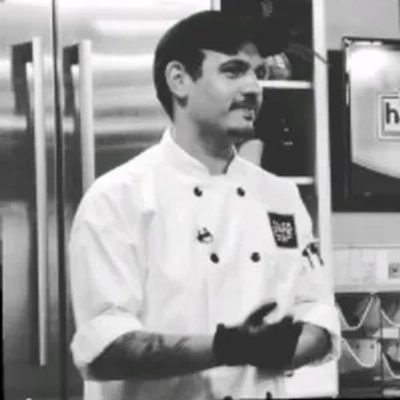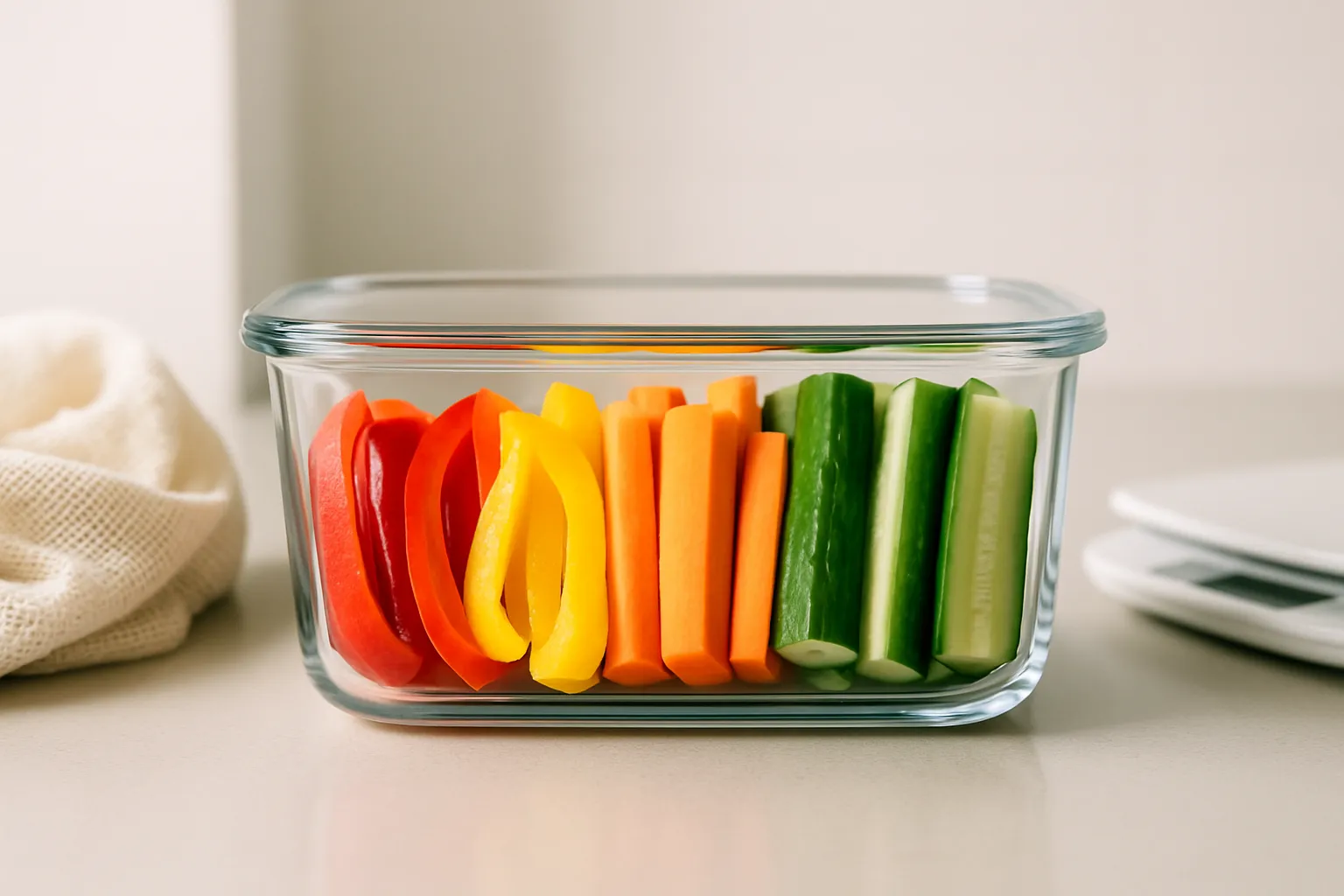Food waste is a global issue with significant environmental and economic impacts. This article presents practical tips for reducing food waste in the kitchen, drawing on insights from culinary experts and sustainability professionals. By implementing these simple yet effective strategies, readers can make a substantial difference in their households and contribute to a more sustainable future.
- Transform Kitchen Scraps into Flavorful Stock
- Track and Repurpose Coffee Grounds
- Implement Cross-Utilization and FIFO System
- Grind Whole Spices to Reduce Waste
- Install Solar-Powered Fridge Ventilation Fan
- Plan Meals Based on Pantry Inventory
- Store Herbs Properly and Freeze Scraps
- Redefine Food Waste for Gut Health
- Skip Peeling Vegetables to Save Time
- Create Eat Me First Fridge Bin
- Vacuum Seal and Prep Meals in Advance
- Understand Food Date Labels
- Reduce Red Meat Consumption
Transform Kitchen Scraps into Flavorful Stock
We believe good food should work hard — just like the folks who make it. One small change we’ve made in our kitchen that’s had a big impact on both food waste and our carbon footprint? We stopped treating scraps like trash and started treating them like tools.
Trimmings from carrots, onions, celery, garlic skins, herb stems, bones from roast chickens, even that last lonely parmesan rind — they all get tossed into a freezer bin. Once it’s full, we simmer it all down into a slow, soul-satisfying stock. It’s the kind of base that adds depth to everything from stews to risottos, and it costs next to nothing. No waste, all flavor.
But it doesn’t stop there. We’ve gotten serious about rethinking “waste.” That stale loaf of bread? Turned into croutons or breadcrumbs. Wilting greens? They go straight into soups, frittatas, or a pesto that packs more punch than your average basil blend. Overripe fruit? Roasted, blended, and reborn in sauces, jams, or dessert fillings.
The truth is, the small stuff matters. It’s easy to think one onion skin or one chicken bone doesn’t mean much, but over time, those choices add up — in the landfill and on your plate. By getting a little more mindful with how we prep, store, and reuse, we’re not just reducing our waste — we’re respecting the ingredients that feed us and the farmers who grow them.
Our tip? Slow down and take stock — literally. Start a scrap bowl or a freezer bag. Keep it next to your cutting board. When it’s full, boil it down with a little salt and love. You’ll end up with a base that tastes better than anything from a box, and you’ll feel good knowing you gave every bit of that food a purpose.
Because at the end of the day, cooking isn’t just about feeding people — it’s about honoring where your food comes from, and making sure as little of it as possible goes to waste. That’s how we do it. One stockpot at a time.
 Justin Meadows
Justin Meadows
Chef/ Owner, Block & Rooster Provisions
Track and Repurpose Coffee Grounds
I’ve learned that the smallest kitchen changes often make the biggest impact. We started tracking our daily coffee grounds waste and realized we were throwing away nearly 15kg per week.
Now we offer free coffee grounds to customers for their gardens, and partner with three local community gardens who collect them weekly. This completely eliminated that waste stream while strengthening our neighborhood connections. The feedback has been incredible – people love knowing their morning coffee is helping grow local vegetables.
The game-changer was implementing a “prep smart” system where we track exactly what sells each day and adjust our fresh ingredient orders accordingly. Since we expanded to seven-day kitchen service, this data became crucial. We reduced our produce waste by roughly 40% just by ordering based on actual patterns rather than guesswork.
My biggest tip: start measuring one specific waste stream for two weeks before changing anything. We focused solely on coffee grounds first, then moved to produce tracking. Small, measured changes stick better than trying to overhaul everything at once.
 Janice Kuz
Janice Kuz
Owner, Flinders Lane Cafe
Implement Cross-Utilization and FIFO System
One small change we’ve made in our kitchen that’s had a big impact is rigorous cross-utilization of ingredients and creative reuse — especially turning scraps into stock, sauces, or staff meals. For example, vegetable trimmings get turned into flavorful broths, and leftover proteins are built into daily specials. This approach has cut our waste dramatically and reduced food costs.
Alongside that, we built a simple but strict First-In, First-Out (FIFO) storage system — labeling and rotating every ingredient so nothing sits and goes bad. It’s basic discipline, but the results are clear: less spoilage, fewer last-minute menu changes, and stronger margins.
My tip: train your team to inspect every bit of peel, trim, and scrap as potential flavor — not trash. The mindset shift is what turns kitchen waste into kitchen wins.
 Dallas Walton
Dallas Walton
Executive Chef, RiverStoneChophouse
Grind Whole Spices to Reduce Waste
After running a spice business and working with global suppliers, I switched to grinding my own spices fresh instead of buying pre-ground versions. Pre-ground spices lose their potency in just 15 days, so I was constantly tossing half-used jars that had gone flavorless.
Now I buy whole peppercorns, coriander seeds, and other spices in bulk and grind them fresh with my mill. Whole spices stay potent for 3-4 years versus weeks for ground versions, so I’m throwing away maybe 5% of what I used to waste.
The carbon impact is significant too — bulk whole spices require way less packaging than multiple small jars of pre-ground spices. I’m making one bulk purchase instead of 8-10 individual spice jar replacements throughout the year.
From sourcing spices globally, I’ve learned that transportation costs drop dramatically when you’re not shipping air-filled pre-ground products. Dense whole spices pack more efficiently, reducing the shipping footprint per unit of actual flavor you get in your kitchen.
 Joseph Rosenblatt PM
Joseph Rosenblatt PM
Owner, Peppermate
Install Solar-Powered Fridge Ventilation Fan
Running a renewable energy company for 30 years has taught me that the biggest energy waste in most kitchens is the refrigerator running inefficiently. I installed a small solar-powered ventilation fan above my fridge that exhausts the heat it generates — it cost me about $150 and took an afternoon to set up.
This simple change dropped my fridge’s energy consumption by roughly 15% because it doesn’t have to work as hard against its own heat buildup. When your fridge runs more efficiently, it maintains more consistent temperatures, which keeps produce fresh 3-4 days longer than before.
The carbon impact is significant — refrigerators account for about 13% of household energy use, so that 15% reduction translates to roughly 200 pounds less CO2 per year. From my off-grid installations, I’ve seen how much food waste happens when refrigeration fails, so maintaining optimal efficiency prevents both energy waste and spoiled food.
The fan pays for itself in about 18 months through reduced electricity bills, and I’ve recommended this setup to several commercial clients who’ve seen similar results in their break rooms and food storage areas.
 Rody Jonas
Rody Jonas
Owner, Pure Power Solutions
Plan Meals Based on Pantry Inventory
One small but impactful change I’ve made in my kitchen is planning meals based on what’s already in my pantry, fridge, or freezer.
Instead of choosing recipes and then shopping for ingredients, I first check what I have, especially perishable items or things that are close to expiring. This helps me avoid unnecessary purchases and ensures that nothing sits unused until it spoils.
I have found that this habit reduces food waste and cuts down on trips to the store, which lowers fuel usage and helps reduce my carbon footprint. On the plus side, it is surprisingly fun; I have discovered creative new meals by mixing ingredients I already had on hand.
The best tip I recommend is to keep a ‘cook soon’ section in your refrigerator or a list on the fridge door. This will help remind you of items that need attention. Planning meals this way is simple, sustainable, and a great way to waste less while saving more.
 Ekeh Maryjane
Ekeh Maryjane
Expert Writer & Researcher
Store Herbs Properly and Freeze Scraps
One small change in my kitchen was that I started storing herbs and leafy greens properly. This simple step really helped keep them fresh longer. I am now wrapping spinach in a damp cloth or storing it upright in a jar of water instead of tossing it.
I also like to create my meal plan for the week. I make use of what I have before buying more, and I often turn leftovers or wilted vegetables into soups, stir-fries, or smoothies.
Another tip: Freeze scraps like onion peels, carrot tops, and garlic skins. I store them in a sealed bag in the freezer, and once it’s full, I simmer them into a homemade vegetable broth. It doesn’t just reduce waste but also saves you a lot of money. These small changes may not seem like much at first, but over time, they make a difference and can also lower your carbon footprint as well as help you feel more connected to your food.
 Mimi Nguyen
Mimi Nguyen
Founder, Cafely
Redefine Food Waste for Gut Health
My biggest change was redefining what ‘food waste’ means in my kitchen. We’re trained to throw away the most fibrous parts of our vegetables like broccoli stems, cauliflower cores, and tough kale ribs. We see them as scraps, but from a digestive health standpoint, they are gold.
These parts are packed with the specific prebiotic fibers that feed a healthy gut microbiome. Tossing them is like throwing away a free supplement. I just chop them very finely or blitz them in a food processor and mix them into soups, sauces, or even meatballs. You get all the digestive benefits, reduce waste, and your gut will thank you for it.
 Christine Kaczmar
Christine Kaczmar
Digestion Doctor, Laser Slim
Skip Peeling Vegetables to Save Time
I stopped peeling vegetables. Carrots, potatoes, even cucumbers — just a quick scrub and they go straight in. Less prep, less waste, and most of the flavor stays. It started as a time-saving move during a busy week and just stuck.
The real tip? Question habits that come from packaging, not need. A lot of food waste isn’t from spoilage. It’s from doing things automatically without asking why.
 Tornike Asatiani
Tornike Asatiani
CEO, Edumentors
Create Eat Me First Fridge Bin
One small change I made was creating a designated “eat me first” bin in the fridge for items nearing expiration. It’s a simple visual reminder that helps reduce forgotten leftovers and ingredients. I also plan meals around what I already have instead of starting with a new shopping list. This not only cuts waste but makes grocery trips more efficient. My tip: organize your fridge like a store shelf — rotate older items to the front so nothing gets lost in the back.
 Nick Vitucci
Nick Vitucci
Head of Marketing, Leto Graphics
Vacuum Seal and Prep Meals in Advance
One significant change that made a big difference in my kitchen was buying a vacuum sealer. It helps keep food fresh way longer, especially fruits and greens, so I waste way less. I usually portion things out for two days and vacuum-seal them right away.
Another big step in reducing my food waste and cooking time was that I started prepping and freezing semi-finished meals in advance — like chopped and blanched veggies, meat portions, broths, and soups. It significantly saves time during the week, and I can defrost just what I need, which really cuts down on spoilage. A 2-hour preparation now saves a lot of waste and time during the week.
 Kate Maksimova
Kate Maksimova
Content Team Lead, Swag42
Understand Food Date Labels
I’m delighted to know that each of us can choose to make small changes that will have a collectively significant impact on our planet’s wellbeing. I certainly have tried to reduce food waste in our home, mostly with the focus on the financial benefit of not discarding perfectly good foods. Then I came to learn more about the difference between the posted dates on various perishable products.
First, I learned that the “best-by” date is actually a reference to the producer’s expectation of their product’s best quality life, including appearance, flavor, and texture. This date does not seek to inform consumers if the product is fresh enough to consume after this date. The “use-by” date, in contrast, is the posted date that the producer expects the product to end its peak quality and safety time period. Thus, the “best-by” date should not be considered as guidance as long as the necessary proper storage has been maintained.
A third date consumers may see is the “sell-by” date, which is strictly guidance from the manufacturer to the retailer. As a more informed consumer, I have concurrently become a more informed home chef and environmental agent.
 Ashley Kenny
Ashley Kenny
Co-Founder, Heirloom Video Books
Reduce Red Meat Consumption
I’ve made a conscious effort to reduce the amount of red meat I eat. Cattle, a major source of red meat, contribute significantly to CO2 emissions — primarily through the release of methane, a highly potent greenhouse gas produced during their digestive process. The upkeep of large amounts of livestock also contributes to emissions due to deforestation to build animal habitats and the energy required to water, feed, and process them.
By buying less red meat, I hope to reduce demand, which will lower the production of red meat and help lower carbon emissions. There are also other potential benefits related to reducing red meat consumption. Many studies have found that red meat is linked to cardiovascular disease and some cancers.
 Vivian Ellis
Vivian Ellis
Marketing Coordinator, Achievable

